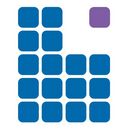Additional Fields of Research
The majority of the research activity at TU Wien can be allocated to one of five research focal areas. Beyond these, however, there are a range of additional research fields that, whilst less comprehensive and cross-disciplinary, nevertheless have great significance for the success and the scientific output of TU Wien.
As “Additional Fields of Research”, they are summarised in the sixth column of the research matrix.
They primarily deal with topics in architecture and urban planning as well as fundamental mathematical methods.
More information
- Development and Advancement of the Architectural Arts
- Urban and Regional Transformation
- Fundamental Mathematics Research
- Mathematical Methods in Economics
More money, more projects, more publications – the Additional Fields have significantly grown in importance at TU Wien in recent years. The Faculty of Mathematics and Geoinformation as well as the Faculty of Architecture and Planning are particularly active here; more than 40 research groups are carrying out research in this area.
The total project volume has increased (around EUR 2.0 million per year), as has the number of research projects (40 projects per year). The number of academic publications has remained the same at around 100 publications per year. The fact that research in these areas is very successful is also reflected in important awards, such as an FWF START Grant, which went to a physicist at TU Wien in 2021, or other highly endowed research funding, such as a Special Research Programme awarded by the Austrian Science Fund FWF.

In the Research Focal Area Additional Fields, 66% basic research, 23% applied research and 11% experimental development is carried out.
The project volume is divided among the faculties as follows: 54.0% Mathematics and Geoinformation, 7.0% Physics, 1.7% Informatics, 1.2% Civil and Environmental Engineering, and 36.2% Architecture and Planning.
The project volume in the individual research fields can be presented as follows: EUR 370,000 in the research field Development and Advancement of the Architectural Arts, EUR 454,000 in the research field Urban and Regional Transformation, EUR 967,000 in the research field Fundamental Mathematics Research, and EUR 454,000 in the research field Mathematical Methods in Economics.
The publications are divided into 54% SCI publications and 46% non-SCI publications.
-
Institute of Statistics and Mathematical Methods in Economics
-
Institute of History of Art, Building Archaeology and Restoration
-
future.lab - Platform for Inter- and Transdisciplinary Teaching and Research
The selection relates to the size of the project volume in the specified period, as well as the proportion of the project volume in the key area of research, the institute project volume, and the proportion of publications.
All data and information provided relates to the research period 2019-2021 (based on the period of the Performance Agreement).
